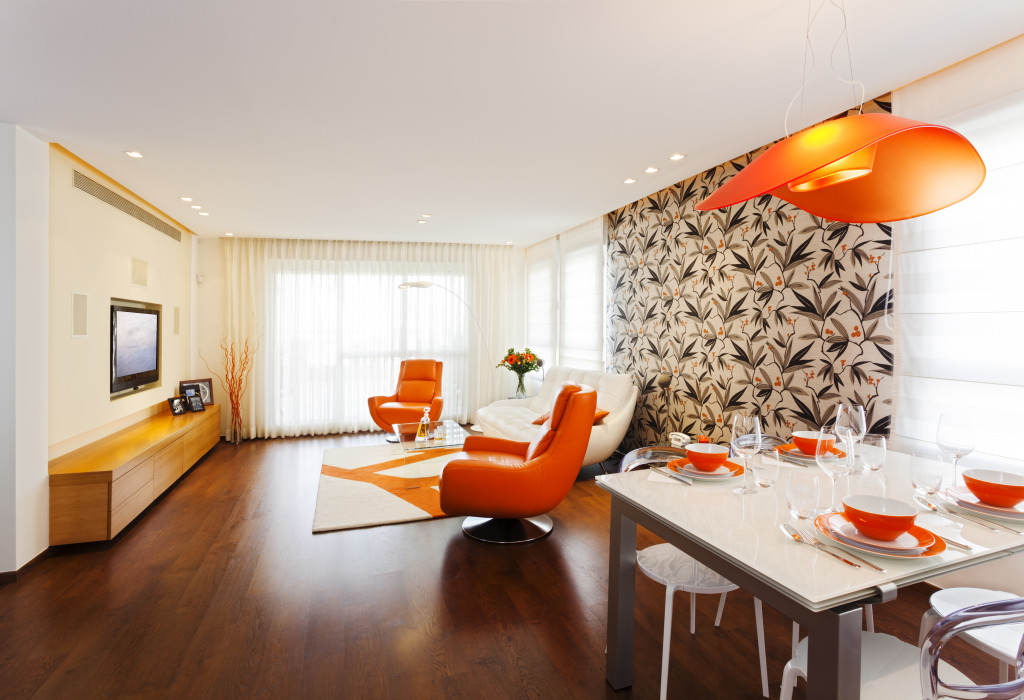- Interior design is planning and designing spaces to enhance functionality and visual appeal.
- A well-designed home can reduce stress, increase functionality, inspire creativity, improve home value, and promote health.
- Poor organization can lead to frustration, while effective use of space can maximize room utility.
- You can easily enhance interior design by making changes like decluttering, playing with colors, improving tiling, and incorporating nature.
- Interior design goes beyond aesthetics; it’s about creating a space that reflects you, meets your needs, and improves life quality.
Your home is more than just a building; it’s where you build your memories and create your each day. That’s why it’s essential to design your living space to make you feel comfortable and relaxed. Interior design is the art of arranging a room aesthetically pleasingly. It defines the functionality, mood, and style of your home. Interior design can enhance your life by altering the overall feel of your space. Here’s what you need to know about interior design, ways it can affect your home life, and easy ways to improve your interior design.
What is Interior Design?
First, you need to understand what interior design is. It’s the process of planning, designing, and coordinating a space to make it functional and visually appealing. Interior designers consider various factors, such as the purpose of the room, its size, lighting, colors, and textures, when creating a design plan. They work closely with clients to understand their needs and preferences to create a space that reflects their personality and lifestyle.
How Does Interior Design Affect Your Home Life?
The design of your home can significantly impact your daily life. Here are some ways it can affect your home life:

1. Reducing Stress
Stress reduction is one of the most significant benefits of interior design. A well-designed home can evoke a sense of calmness and relaxation. Interior design can help create a pleasant and comfortable environment, reducing stress levels after a long day at work, for instance. Homeowners who feel relaxed at home are more productive and comfortable communicating with others.
2. Increased Functionality
Interior design also plays a vital role in determining the layout and functionality of a room. Poorly arranged places can frustrate you, while well-organized ones can help you make the most out of your living space. Interior designers use every inch of a room in a functional way that caters to your needs. Whether optimizing a small space or organizing a larger one, interior design can make a room more accessible to those who use it.
3. Encourages Creativity
Interior design can inspire creativity within a space. Tailoring the right environment to your tastes and preferences allows you to express yourself creatively. A well-designed room can make you feel comfortable and provide a sense of belonging. Through interior design, you can boost creativity and generate new ideas when working on a project.
4. Improves Home Value
A beautiful and well-designed interior adds value to a home. It can help make the home easier to market once it’s time to move on. It can also leave a lasting impression on guests who visit your home. A home with a cohesive design allows potential buyers to envision their future in the space, increasing its appeal.
5. Promotes Better Health
Lastly, Interior design can positively affect your physical and mental health. Strategically placed furniture or decor can improve indoor quality by increasing air purifying plants and avoiding indoor allergens. Also, it can influence your mood by selecting the right colors and adding elements such as natural light.
Easy Ways to Improve Your Interior Design
Now that you understand the importance of interior design, let’s discuss some easy ways to improve it:

1. Declutter and Organize
Start by decluttering your space and getting rid of unnecessary items. A clean and tidy room will make it easier to see what needs improvement. Organize belongings in a way that is both functional and aesthetically pleasing.
2. Improve Your Tiling
It’s amazing how much of a difference changing or adding tiles can make in a room. Consider updating your flooring, backsplash, or shower tiles to add character and enhance the overall look of the space. Additionally, you can use concrete coloring acids to transform a dull concrete floor into a unique and vibrant one. These acids work by chemically reacting with the concrete, changing its color and creating a beautiful marbled effect.
3. Play with Colors
Colors play a significant role in interior design as they can affect mood, energy levels, and overall atmosphere. Experiment with different colors to find what works best for your space. Consider using color accents or bold statement pieces to add character and personality to a room.
4. Incorporate Nature
Bringing elements of nature into your home can significantly impact the overall design. Add plants, flowers, or natural materials such as wood or stone to add texture and create a sense of calmness in your space.
Interior design goes beyond aesthetics; it’s about creating a space that reflects your personality, meets your needs, and enhances your overall quality of life. From reducing stress and inspiring creativity to improving home value and promoting health, a well-designed home can profoundly impact your daily life. You can significantly enhance your interior design by decluttering and incorporating natural elements. So, don’t underestimate the power of a well-designed space. After all, your home isn’t just a place to live—it’s a space to thrive.
